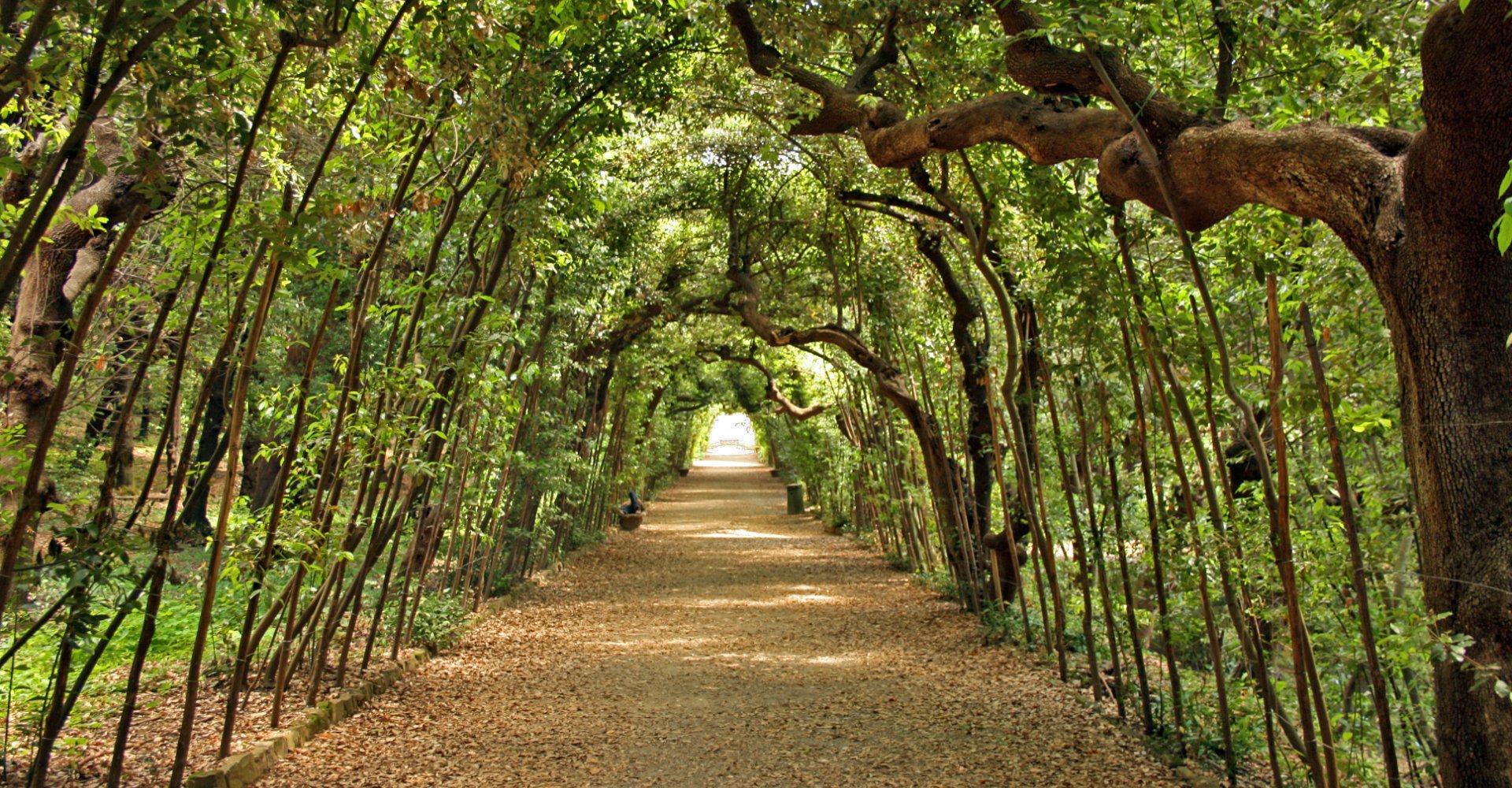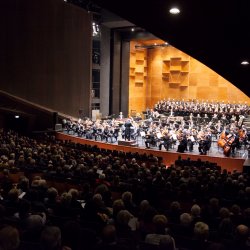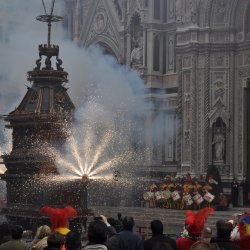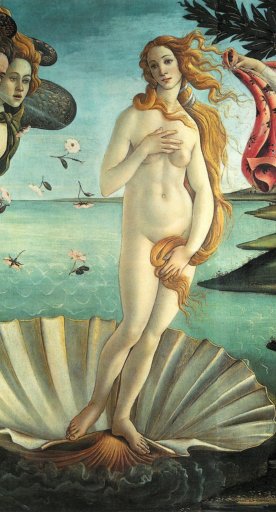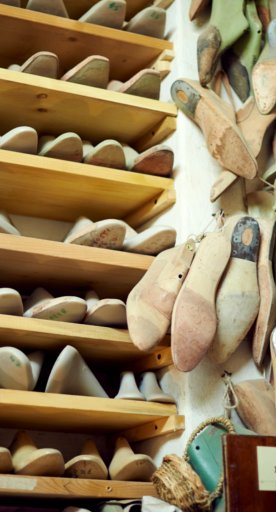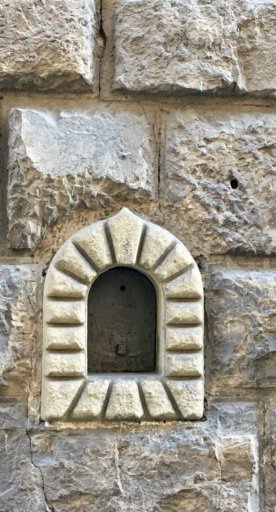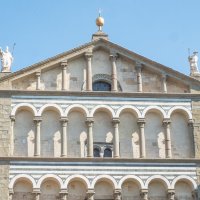5 secrets of the Boboli Gardens
In search of hidden treasures in the Medici park, from the Buontalenti Grotto to the Limonaia
Boboli is one of the most important and beautiful Italian style gardens in the world and, along with the other Tuscan Medici gardens and villas, is included in the list of UNESCO World Heritage Sites.
This green island in the heart of Florence, which stretches across 45 thousand square metres, is much more than just a garden. It is a true open-air museum, where fountains, caves, streets and buildings alternate with small woods, statues and ponds, telling the story of the three reigning dynasties that created and embellished it: Medici, Lorraine and Savoys.
It all began in 1549, when Eleanor of Toledo, wife of Cosimo I de' Medici, bought the palace of the Pitti family and decided to enlarge and modernize its garden, entrusting the work to the architect Niccolò Tribolo.
Since then, Boboli has been expanded and enriched continuously up to the present day.
Boboli is also a place full of curiosities and secrets, and here we reveal 5 of them.
-
1.Grotta Grande, a cave of wonders
-
2.The ice houses, historic fridges
-
3.The capricorn and the turtle
-
4.The Egyptian obelisk
-
5.The Medici lemons
Grotta Grande, a cave of wonders

The Grotta Grande (or Buontalenti Grotto) is a small treasure trove and a Mannerist masterpiece, built by Bernardo Buontalenti between 1583 and 1593 on behalf of Francesco I de' Medici.
The grotto is divided into three rooms. Michelangelo's unfinished statues, the four Slaves, were displayed in the first room until 1924, when they were replaced with copies. The originals are now in the Galleria dell’Accademia.
The grotto reads like a romantic initiation, so it’s no surprise that it became a place where lovers would meet to escape prying eyes.
The second room is decorated with a sculpture of Theseus and Arianna by Vincenzo de 'Rossi, a clear allusion to the cave’s romantic connotations, while the third and last room is set up like a real cave, a love nest dominated by the fountain of Venus after the Bath by Giambologna.
The ice houses, historic fridges

The two small domes between the amphitheatre and the Pegasus meadow are one of Boboli’s best kept secrets: they are the historic ice houses. These partially buried artificial caves maintained inside a perpetually cold environment inside, thanks to the snow transported from Abetone and stored underground. Just like modern refrigerators, they were used to store perishable foods and beverages.
The capricorn and the turtle

Among the many symbols that adorn the garden, there are two that are oft repeated and linked to one person in particular: Cosimo I de 'Medici.
The first is the capricorn, or goat, which can be found almost everywhere: on the facade of the Grotta Grande, inside the Grotticina della Madama also known as Grotta delle Capre (Goats’ Cave), another work by Buontalenti, and on the columns of the gates to the large Vasca dell'Isola.
The Capricorn was a symbol of power adored by Cosimo, who believed in the astrology of the time. Many great leaders were born or had planets in the Capricorn sign, including Lorenzo the Magnificent himself, born on January 1st.
The tortoise with the sail, accompanied by the phrase "Festina lente" or "Hastily slowly", was the motto that Cosimo chose for his government, because it espoused that prudence must always accompany action if it is to be successful. There is a tortoise on the facade of the Grotta Grande and also in the Fontana del Bacchino, where the court dwarf Morgante, one of Cosimo’s friends, is depicted as Bacchus riding the tortoise.
The Egyptian obelisk

In Boboli there is even an original Egyptian obelisk, coming from the city of Aswan and probably sculpted during the reign of Ramesses II, between 1297 BCE and 1213 BCE, making it one of the oldest monuments in Tuscany.
Over six and a half metres high, the obelisk arrived in Rome in the 1st century CE with the Roman Emperor Domitian. In the 16th century, it was bought by Cardinal Ferdinando de’ Medici, who placed it in the gardens of the Villa Medici in Rome. It was only in 1788 that Grand Duke Pietro Leopoldo of Lorraine had the obelisk transferred to Florence where, in 1840, it found its current position, in Boboli, in front of the large granite basin. The basin itself is also a rarity: it comes from the Baths of Nero in Rome and is among the largest intact tanks from antiquity still in existence.
The Medici lemons

The Medici had a real passion for citrus fruits, so much so that they cultivated and cross bred different species and spread the fashion throughout Tuscany.
Today many of these ancient citrus fruits are preserved in the Boboli lemon house, which was built in 1778 at the request of Grand Duke Peter Leopold.
